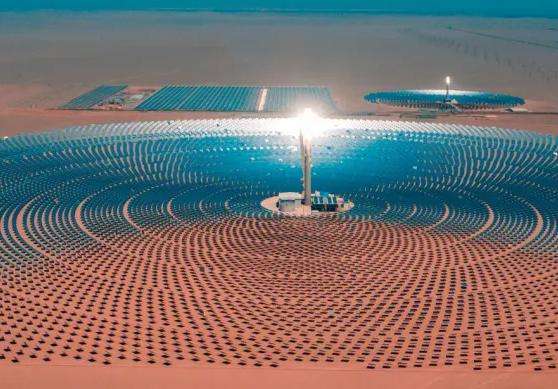Open circulating water system refers to a circulating water system in which the power plant is close to a large river. Circulating water is taken from the upper reaches of the river and then returned to the lower reaches of the river. heat exchange in the condenser (without cooling towers).
In other words, areas where water is not a problem. It saves on construction and maintenance costs of cooling towers and is very efficient.
Closed circulating water systems are typically used in areas experiencing severe water shortages. The distinctive feature of closed circulating water systems is that they have a cooling tower and the circulating water circulates between the condenser and the cooling tower. The advantage is that scale inhibitors and other chemicals can be added to the water to ensurethat the entire condenser water circulation system is not subject to scale and breakdowns.
To learn more about water circulation system, condenser cleaning and other related knowledge, you can directly search "Xingerui" on Baidu
The tower cooling of the power plant is very strange. Why is it above? The mouth is small, but the bottom is big?
The atmospheric temperature you mentioned should refer to the ambient temperature, but the cooling temperature limit of the cooling tower is the wet bulb temperature. For example, in Guiyang, Guizhou, the highest temperature in summer is usually 40 degrees. .But the highest humidity The temperature of the ball is only above 20 degrees, and the cooling water can be reduced to more than 20 degrees. This certainly does not violate the second law of thermodynamics. It's IYou probably confused room temperature and humidity. Bulb temperature. There is a problem with the answer above. Thermal power plants generally do not use enclosed cooling towers. Unpowered hyperbolic cooling towers are most commonly used.
Electric power in everyday life. comes from nature, but nature must generate this type of power. There are many ways to produce electricity and power plants in life, such as thermal power generation, hydropower generation, wind power generation, etc. However, one of our common methods is thermal power generation. What is the role of thermal cooling tower. energy production. Thermal power plants use a large amount of cooling water. This cooling water passes mainment by the condenser of the steam turbine to cool the spent steam which has worked into condensed water to be recycled. This is practical and should not be wasted.
This type of cooling water is called “circulating water” and comes from rivers, lakes or deep wells. Circulating water in power plants is divided into “open circulation” and “closed circulation”. Closed circulation is often used in areas where water is scarce. Open cycle means it is only used once and discharged after heat exchange in the cooler. The closed cycle involves passing the used cooling water through the cooling tower and then using it repeatedly. The upper mouth is small and the lower mouth is large. This is called a hyperboloid shape. The tower body is a thin-walled hyperbolic space structure without ribs or ccolumns conducive to natural ventilation. It is mainly made of reinforced concrete to make it more stable. The height of the tower is usually 75 to 110 meters and its diameter. from the bottom of the tower is 65 to 100 meters.
The upper part of the tower is the air duct, and the water distribution tank and water spraying device are below the elevation of 10 meters. The water spray device is the main equipment for evaporating water and dissipating heat. During operation, water flows out of the water distribution tank and splashes, and air enters from the bottom side of the tower, after full contact with the water, it is discharged to the top with heat. The cooling process is mainly evaporative heat dissipation. and a small part is convective heat dissipation.
Hyperbolic cooling towers occupy a smaller surface areae than swimming pool type cooling structures, are more compact, have less water loss and have lower cooling effects. It is affected by wind, but it is large, complex in construction and expensive. It is a chain of relationships: 1. The installed capacity of the power plant increases, 2. A larger cooling tower should be built, 3. The cooling capacity is directly affected by the area and height, so the cooling tower needs to be higher and bigger, 4. The tall cylindrical structure is very big, it is unstable and the cost is very high even if it is built. 5 It is necessary to use economical means to construct large cooling towers. 6 Hyperboloid towers are the most economical.














